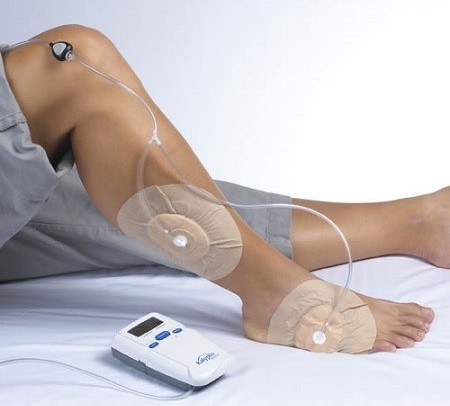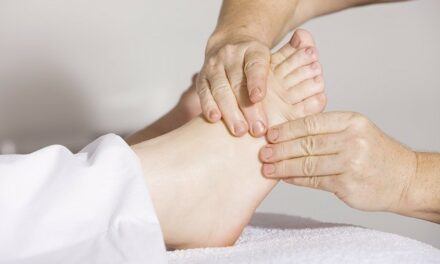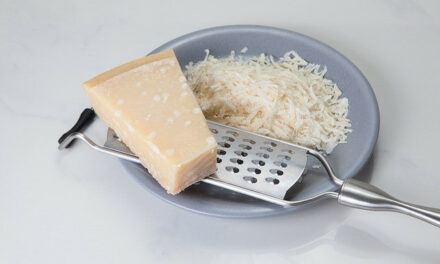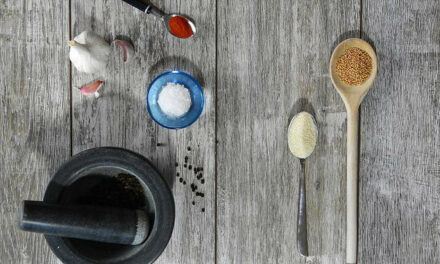Negative pressure wound therapy, also known as Vacuum-assisted Closure and a Micro Deformational Wound Therapy, has a great potential to improve acute and chronic wound management. Negative Pressure Wound Therapy is believed to promote the healing of wounds like pressure ulcers, venous ulcers and diabetes ulcers, fractures and burns. This Is A Guide For Selecting The Best Negative Pressure Wound Therapy Dressings For Diabetic Wounds.
Our dedicated team have witnessed the transformative power of negative pressure wound therapy (NPWT) firsthand. While caring for patients with severe diabetic ulcers that had been resistant to traditional treatments, we have recommended NPWT. Over the course of a few weeks, our patients saw the wound gradually heal, the patient’s pain diminish, and their quality of life improve. Our experience highlights the impactful role that NPWT can play in wound management.
The healing power of vac wound therapy is mostly through multiple actions, which includes the
- removal of exudate from the wounds to help establish fluid balance,
- providing a moist wound environment,
- increasing in the blood flow to the wound,
- decreasing bacterial wound load,
- a reduction in edema and third-space fluids, and
- boosting the white blood cells and fibroblasts within the wound.
Negative pressure wound therapy (NPWT) is used in the treatment of both chronic and acute wounds. To use the NPWT for treatment, you need to create some sort of continuous negative pressure inside the wound using a source of vacuum. In this way, you get rid of the unwanted fluid and other infectious materials, which will, in turn, aid wound healing and closure.
Lean more about Diabetes Wounds in our article Diabetic Wound Care and Treatment.
Our Methodology To This Article
To ensure the highest quality of information, we’ve referenced peer-reviewed studies and reputable medical sources throughout this article. These sources validate the accuracy and reliability of the details we provide regarding negative pressure wound therapy.
As NPWT continues to evolve, emerging trends are shaping its future. Smart technologies are being integrated into NPWT devices, allowing for real-time monitoring of wound progress and therapy effectiveness. Additionally, personalized treatment approaches are being explored, tailoring NPWT strategies based on patients’ genetic profiles for optimized outcomes.
History of Negative Pressure Wound Therapy
Negative pressure wound therapy is one of the oldest methods used in wound management. It dates back to 400 BC when the Greeks use cupping as a vacuum therapy using heated copper bowls. This technique was used for centuries until the method and design changed.
| Year | Milestone and Description |
|---|---|
| 400 BC | Greeks use cupping with heated copper bowls as a vacuum therapy, an early form of negative pressure wound therapy. |
| Late 19th Century | Professor August Bierb describes cupping technique using ignited alcohol inside a glass with a rubber tube and hot cupping glass. |
| 1907 | Dr E. Klapp uses a suction pump to remove infectious materials in tuberculosis lesions. |
| 1952 | NPWT using various filler materials like natural sponge, cellulose sponge, etc., patented in Germany. |
| 1970s | NPWT employed in post-surgery wound repair and exudate removal. |
| 1995 | Kinetic Concepts gets the first FDA clearance for NPWT product. |
| 1997 | Argentaa and Morykwas publish VAC (vacuum-assisted closure) technique using foam wound filler and pump. |
| Early 2000s | NPWT adoption continues to evolve, with various companies developing NPWT systems. |
| 2001 | NPWT approved for reimbursement by the Centers for Medicare and Medicaid Services. |
| 2003 | NPWT becomes a commonly accepted therapy in the US. |
| 2010 | NPWT gains recognition worldwide. |
By the end of the 19th century, cupping was described by Professor August Bierb as the technique by which alcohol is ignited inside a glass and a rubber tube placed on the skin before applying the hot cupping glass. (Cupping Therapy)
Since then, vacuum therapy has been used for the treatment of all types of open wounds as well as infections.
In 1907, Dr E. Klapp used a suction pump for the removal of infectious materials in tuberculosis lesions in a patient with advanced tuberculosis. The use of NPWT with a natural sponge, cellulose sponge, rubber sponge, foam rubber, gauze, cotton, and other filler materials was patented in German in the year 1952.
In the 1970s, doctors were using NPWT to repair wounds following surgeries to improve tissue repair and to remove exudates from wound.
The use continues to evolve.
Kinetics Concepts was the first company ever to have a product of NPWT cleared by the US Food and Drug Administration. This was in 1995.
Argentaa and Morykwas published their technique using a foam wound filler and pump, called vacuum-assisted closure (VAC) therapy in 1997.
VAC was marketed and distributed by KCI (Kinetic Concepts Inc). Since then many NPWTs has been built by other companies.
As the use of NPWT in hospitals in the United States gained more popularity, in 2001, it became approved for reimbursement by the Centers for Medicare and Medicaid Services.
By 2003, NPWT was a commonly accepted therapy in the US. It was well-known to the rest of the world by 2010.
What is Negative Pressure Wound Therapy?
Negative pressure wound therapy refers to any device that seals a wound tightly to create an airtight environment with a vacuum (or negative pressure), resulting in a series of biological reactions that enhance wound healing.
Beyond its visible effects, NPWT operates at the cellular level to promote wound healing. The controlled negative pressure stimulates blood flow, enhancing oxygen and nutrient delivery to the wound site. Furthermore, NPWT modulates cell migration and promotes granulation tissue formation, creating an ideal environment for tissue regeneration and repair.
Wound Care with Negative Pressure Wound Therapy Technique
The following are the techniques involved in NPWT;
- In NPWT, the dressing should be a porous material such as form, gauze or honeycombed textiles with a dimpled wound contact surface. This is to promote the transmission of pressure within the wound.
You should have the material cut to the approximate size of the peri-wound (immediate surrounding of the wound) and placed gently over the wound.
The type of dressing you would use would be dependent on the patient; the kind of wound you are treating as well as your clinical objectives (e.g. reversal, cure vs control worsening).
- A drainage port should be placed above the dressing and the wound sealed with a transparent adhesive film dressing or tape to form a complete seal.
- The drainage port should be connected to a negative pressure unit, which is programmed to produce and maintain a required amount of negative pressure, usually ranging from −125 to −75 mmHg depending on the type dressing material used and patient tolerance.
- You can apply the pressure in a continuous, intermittent, or variable mode depending on the device used.
The continuous mode is the most frequently used.
In the variable mode, the suction level changes; however, the device is never turned off.
In the intermittent mode, the pressure is switched on and off at different intervals throughout the course of treatment.
During the procedure:
- Immediately as you switch on the unit, air will be sucked out of the dressing causing it to collapse inwards and drawing in the edges of the wound with it.
- The fluid within the wound would be sucked up by the foam and transported into a disposable canister within the central negative pressure unit.
- As it removes the extra fluid from the wound bed, it also enhances circulation and removes exudate from the wound, creating a moist healing environment and reducing edema.
- Generally speaking, changes should be made to the wound dressings every 48 hours. If the wound is not infected, you may leave the dressing a bit longer. However, in the presence of an infection, the dressing should be changed as regularly as every 24 hours.
- Negative pressure wound therapy may be required for 2-4 weeks, depending on the type of wound and speed of healing.
Benefits of Negative Pressure Wound Care
- Accelerates wound healing
- Minimizes the risk of infection
- Reduces the number of dressing changes
- Increases blood flow to the wound area while sucking up the excess fluids from the wound.
Now let’s look at some of the leading Negative Pressure Wound Therapy systems available in the market.
1. PICO Negative Pressure Wound Therapy System
The PICO Single Use Negative Pressure Wound Therapy System is a product of Smith and Nephew.

It is designed for acute and chronic wounds and closed surgical incisions with low to moderate levels of exudate.
This single-use system doesn’t make use of canister, and this implies that the pump is small and can easily fit into the palm of your hand. In this way, the system is inconspicuous and portable to wear, with a wear time of about seven days. It is approved for usage in both hospital and home care settings.
The PICO pump produces an adequate negative pressure of -80mmHg while providing therapy for up to 7 days.
Features of PICO Single Use Negative Pressure Wound Therapy System
- The PICO pump is fixed to a suitable creatively designed dressing, which is simple, fast, easy to apply and removed, minimizing skin trauma and delivers the negative pressure across the wound bed or closed incision.
- The dressing has a silicone contact that permits passage of fluid and also reduces the Pain one would feel on removal.
- All ten dressing feature Soft Port technology designed to reduce the risk of pressure points and supports patient comfort.
- The system drains the fluid away from the wound or closed incision through a unique combination of absorbency and evaporation.
- Simple operation means less chance of error and simple instructions reduce training time.
- The unique design of the dressing makes therapy easily accessible for wounds in unusual areas such as the shoulder, neck, sacrum or knee.
(Just follow the links to read about Remedies for Diabetic Leg Pain, and Best Exercise for Diabetes)
Advantages and Disadvantages of PICO Single Use Negative Pressure Wound Therapy System
Pros
- The main unit is pocket size, makes it easy for its users to wear compared to the traditional NPWT devices.
- It is provided as a convenient all-in-one system that supports patients in maintaining their daily activities.
- Patients can be safely discharged with PICO in place.
- Its size and simplicity give you the confidence that it can be managed at home.
Cons
- There is the tendency that while on transit, radio frequency interference may affect its performance.
- High humidity and temperature are likely to reduce its wear times.
- It is not MRI compatible.
- It does not come with audible alerts.
Healthcare providers can confidently use PICO as it has been shown to improve patient outcomes and use of resources across a range of wound types and care settings.
2. VAC Therapy System
VAC therapy system is a product of KCI.
KCI was the first to VAC® Therapy in 1995 and is a market leader in advanced wound therapy.
With more published clinical evidence than any other form of NPWT, the VAC Therapy System has shown:
- 80% reduction in risk of readmission,
- 76% reduction in need of reoperation,
- 50% shorter healing time, and
- 40% reduction of surgical wound dehiscence and infection.
There is Only One VAC Therapy system, and it is an advanced wound management system for use in acute, long-term and home care settings.
The system is intended to create an environment that promotes wound healing by preparing the wound bed for closure, reducing edema, promoting the granulation tissue formation and perfusion and by eliminating infectious material and exudates.
This system can be used for patients with chronic, acute, traumatic (after an injury) and dehisced wounds, partial-thickness burns, leg ulcers, flaps and grafts and also for surgical incisions that continue to drain.
(Did you know How to Choose a Cushion for a Wheelchair to Prevent Pressure Ulcers?)
Features of the VAC Therapy System
The VAC Therapy System Consists of Four Parts:
• The VAC therapy unit, which produces negative pressure

• Sterile plastic tubing with SensaT.R.A.C. ™ pressure-sensing lumens that connect the therapy unit to the dressing

• VAC foam dressings that are placed on the wound

• V.A.C. Drape to cover the foam dressings

Additionally, if you are a caregiver, this would benefit you as VAC Therapy comes equipped with EasyClear Purge Technology. This unique technology provides real-time updates to caregivers and patients, so it alerts timely if any sign of blockage to make sure you proactively prevent and clear any blockages as they occur.
Advantages and Disadvantages of VAC Therapy System
Pros
- VAC Therapy is the only NPWT device with proprietary SensaT.R.A.C. Technology, which monitors negative pressure at the wound site continuously and makes up for any changes, maintaining a consistent environment for the removal of exudate.
- It provides 90% more accurate delivery of negative pressure.
- It removes fluid 98% faster than other NPWT systems. To put in perspective, it removes the same volume of fluid in 15 minutes what other systems require 24 hours to remove.
Cons
- Use of the VAC therapy system is associated with certain risks, If you use the system on after abdominal surgery or abdominal wounds. For example, at those locations’ bleeding and formation of enteric fistula (an abnormal connection between the intestinal tract and the skin) have been common complications.
Its usage can predispose to wound infection.
3. SNAP Therapy System
The SNAP® Therapy System, a product of KCI is a mechanically powered, disposable Negative Power Wound Therapy device, which combines the simplicity of advanced wound dressings with the proven efficacy of negative pressure wound therapy.

The SNAP therapy system is useful for the elimination of small amounts of exudates from leg ulcers, flaps and grafts, acute, chronic, dehisced, superficial, surgical, traumatic (after an injury), and sub-acute wounds.
Application of SNAP Therapy System
The method of applying SNAP Therapy involves the below.
- Cutting and applying the SNAP Blue foam or antimicrobial gauze to the wound,
- placing the SNAP Hydrocolloid Dressing over the wound and sealing it.
- The dressing comes with an integrated port for the one-step application.
- The tube can be cut to the desired length to minimize the risk of tripping or falling.
- The tube is connected to the SNAP Therapy Cartridge, and negative pressure therapy is switched on by ejecting the activation key away from the cartridge.
The cartridge can be fixed to the patient’s extremity or belt using the SNAP strap with the Removal & Change Frequency of 48-72 hours.
Other recommended dressings are SecurRing Hydrocolloid which provides fast and easy sealing on uneven skin surfaces and challenging body contours and SNAP Bridge Dressing Kit.
Features of SNAP Therapy System
- It is designed to be small, silent and discreet so that it can be hidden under your clothing.
- It doesn’t restrict movement or interfere with one’s activities, so, a patient can move freely while treating their wounds.
- The SNAP Therapy System is designed for patients who would benefit from wound management by applying negative pressure, especially as the device could promote wound healing by the removal of excess exudates.
Advantages and Disadvantages of SNAP Therapy System
Pros
- The SNAP therapy system was meant to make dressing applications simple.
- It saves cost over modern dressing systems because it prevents longer treatment time hence reduce associated cost of treatment and complications.
Cons
- The SNAP Therapy System is not a durable, reusable medical equipment, but a single-use, disposable device like many other disposable wound care products.
- It is relatively new hence; there are inconclusive cost and effectiveness research data available for it.
Vacuum-Assisted Closure Therapy (or VAC) Dressings
The vacuum-assisted closure therapy is a system that pulls potentially infectious fluids and materials out from your wound via a tube and collects them in a canister.
VAC dressings also act to create an environment that promotes healing.
Here are some excellent VAC dressing products.
1) V.A.C. GranuFoam Silver Dressing
This is the Only Silver Dressing designed for the V.A.C. Therapy Systems.

It combines the benefits of V.A.C Therapy with the bacterial barrier properties of silver. This silver dressing allows the V.A.C. GranuFoam™
dressing pores to come in contact with the wound directly and eliminates the need for additional silver dressing layers that may interfere with the negative pressure and granulation.
This dressing forms an effective barrier for bacterial penetration. The protective silver minimizes the occurrence of gram-negative and gram-positive bacteria. This helps reduces infections in the wounds
2) V.A.C. GranuFoam Dressings
The Granu Foam is designed to be used on Irregular Wound Contours
because of its flexible design.
The design promotes the formation of granulation tissue in wounds. Its open pore structure helps provide uniform distribution of negative pressure at the wound site. The hydrophobic construction helps to remove exudate.
It comes in different shapes and sizes.
3) V.A.C. Simplace EX Dressing Kit and V.A.C. Simplace Dressing Kit
The Simplace ™ dressing kit is designed to simplify the V.A.C. Therapy dressing placement process.
The kit contains:
- V.A.C. GranuFoam ™ dressing which helps to heal by promoting the formation of granulation tissue. The spiral-cut foam is easy to size with a design that allows more natural bridging.
- SendaT.R.A.C. Technology which guarantees that the prescribed therapy is delivered to the wound site.
- Drape, which is designed exclusively to be used with V.A.C. Therapy to provide a moist wound healing environment and act as a barrier to outside contaminants.
V.A.C. Drape is supplied with V.A.C.Simplace EX Dressing.
3M’s Tegaderm Drape is supplied with V.A.C. Simplace Dressing.
4) V.A.C. WhiteFoam Dressings and V.A.C. WhiteFoam Dressing Kit
The White Foam ™ dressing is versatile and comfortable Polyvinyl Alcohol (PVA) Dressing used with VAC Therapy.

It is less adherent than V.A.C GranuFoam ™ for use with skin grafts.
With a higher tensile strength that makes it easy to place and remove from a wound and with an increased density for restricted in-growth of granulation tissue for a more comfortable dressing change.
5) V.A.C. VeraFlo Cleanse Choice and V.A.C. VeraFlo Dressings
V.A.C. Vera Flo ™ dressing is designed to be used with V.A.C. VeraFlo Therapy.

The dressing is designed with a higher tensile strength to ensure the complete removal of foam from the wound bed and less hydrophobic properties to enable the even distribution of topical wound solutions across the wound bed compared to V.A.C. GranuFoam dressings.
The tube-like shape of the V.A.C. Vera Flo Cleanse dressing allows flexibility in dressing wounds with complex geometries.
The unique three-layer design promotes a wound cleansing option which facilitates the removal of thick exudate material and any infectious material, from the wound, providing a wound cleansing option.
Case Study: Maria’s Healing Journey
Maria, a diabetic patient, faced a persistent wound that caused her immense discomfort. After her healthcare provider introduced her to NPWT, Maria embarked on a healing journey. She recalls the relief she felt as the therapy reduced pain and accelerated wound closure. Her story underscores the profound impact that NPWT can have on patients’ lives.
Our seasoned wound care specialist, reflects on his extensive experience with NPWT. He emphasizes the therapy’s versatility in managing chronic and acute wounds, sharing stories of patients who experienced remarkable healing under his care. This specialists insights offer a professional perspective on NPWT’s effectiveness.
Practical Tips for Patients and Caregivers
If you or a loved one are considering NPWT, here are some practical tips to ensure a smooth experience:
- Maintain proper hygiene around the wound site to prevent infection.
- Familiarize yourself with the dressing change process and follow the instructions carefully.
- If you encounter any issues, such as excessive pain or leakage, don’t hesitate to reach out to your healthcare provider.
- Stay consistent with follow-up appointments to monitor progress and make any necessary adjustments.
This comprehensive approach to NPWT ensures that you’re well-prepared for the journey toward effective wound healing.
Citations and Clinical Evidence
The research published in the Journal of Burns and Trauma is one of the key researches dived into conclusions and latates consensus on the application of negative pressure wound therapy of diabetic foot wounds. Conclusive evidence is promising, and many clinical trials are underway, for example, the research conducted at the Assiut University.
Summary
The negative pressure therapy wound technique is used in chronic wounds and acute wounds management or the sort of wounds that do not heal easily such as those associated with Diabetes. It works by creating a controlled negative pressure control and works better when used in combination with an appropriate foam dressing, which I noted in the article.






Shani,
Thank you for providing such an informative and detailed guide on Negative Pressure Wound Therapy (NPWT) and the various dressing options available. Your article thoroughly explains the benefits and applications of NPWT, particularly in the context of diabetic wounds, pressure ulcers, and other types of wounds.
It’s truly impressive to read about the positive impact NPWT has had on patients with severe diabetic ulcers that had been unresponsive to traditional treatments. Sharing these real-life examples adds a layer of authenticity to your article, helping readers understand the tangible benefits of this therapy.
The historical overview of NPWT’s evolution, from its early use in cupping techniques to the sophisticated systems available today, provides a rich context for understanding its development over time.
The breakdown of different NPWT systems, including their features, advantages, and disadvantages, is incredibly helpful for individuals seeking to make informed choices. Additionally, your practical tips for patients and caregivers offer valuable insights for those who might be considering NPWT.
Overall, your comprehensive article is a valuable resource for anyone interested in understanding the power and potential of Negative Pressure Wound Therapy in managing chronic and acute wounds. Your use of citations and clinical evidence further adds to the credibility of your content. Great job in providing such a well-researched and insightful guide!
Les
Dear Les,
Thank you so much for taking the time to share your thoughtful and appreciative feedback on our article about Negative Pressure Wound Therapy (NPWT) and its applications, particularly in the context of diabetic ulcers. Your kind words truly warm our hearts and reinforce the importance of shedding light on innovative treatments that can make a significant difference in patients’ lives.
I’m delighted to hear that the article provided you with a comprehensive understanding of NPWT and its historical evolution. It’s important to me to not only try to present the technical aspects of the therapy but also to convey the real-life impact it has on patients who are battling challenging wounds. These stories indeed breathe authenticity into the article and help readers grasp the tangible benefits that NPWT can offer.
The breakdown of different NPWT systems and their features is intended to empower individuals with the knowledge they need to make informed decisions about their wound care. Your recognition of the practical tips for patients and caregivers is heartening, as I believe that a holistic approach to wound management is key to successful outcomes.
The integration of citations and clinical evidence is something I hold in high regard, as it adds a layer of credibility and trustworthiness to the information presented. It’s our aim to provide a well-researched and insightful guide that equips readers with the tools they need to explore the potential of NPWT for wound healing.
Thank you again for your encouraging words. We’re truly honored that the article resonated with you and met your expectations. If you ever have more questions or topics you’d like to explore, please don’t hesitate to reach out.
Warm regards,
Shani